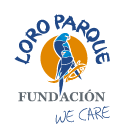Presently, Loro Parque is leading a pioneer project that will include the participation of more than 100 dolphins from 14 European zoos with the purpose of studying whether the animals suffer from stress. This study is being carried out simultaneously in all the participating institutions and consists in analyzing the saliva samples to detect the level of the cortisol hormone. Until now, the conduct of this study involved extraction of a blood sample.
Dr. Javier Almunia, Environmental Director of Loro Parque Foundation, explains that one of the fundamental aspects of the modern zoological parks, like Loro Parque, is their involvement in investigative projects undertaken to uncover until what point the animals under their care demonstrate any stress-related problems that could potentially develop into a pathology.
For this reason, the stress indicators are being studied, being quite complex in their nature as they represent biochemical and hormone markers, like e.g. the aforementioned cortisol. It serves as yet another tool to facilitate the study of an animal, and, at the same time, to analyze if an animal shows symptoms of apathetic behavior or deals well with the rest of the group.
Javier Almunia, who holds a Doctorate in Marine Sciences, explains that stress is a natural physiologic reaction present in all living beings and serves to prepare the organism before a possible change or danger. In fact, “to live a situation of stress is, by itself, not bad at all”, explained the expert. It does become a problem when the stress lasts a long time or becomes chronic. This is when stress can contribute to emergence of illnesses”, emphasizes Dr. Almunia.
The efficiency of measuring the levels of this hormone lies in the fact that the results are obtained almost immediately, therefore, the intervention can be administered “very quickly”, if necessary, underlines the expert. The novelty of the project being led by Loro Parque Foundation is the new method of investigation that involves analysis of the saliva and not the previously used method of analyzing the level of cortisol present in the blood of an animal.
What is initially required in order for the obtained data to be useful is to know what the normal concentration of the cortisol in an animal is, so that it could be later determined whether the results represent high or low levels. The animals will be chosen randomly to ensure that the dolphins participating in the study represent the normal concentrations of cortisol.
Among participating zoological parks are three from Spain, two each from Portugal, France and Italy, and one each from Holland, Germany, Sweden and Finland.
Every centre will apply the same methodology during 15 to 20 days, in accordance with the possibilities of each respective dolphinarium, and the samples will be directed to the University Autónoma de Barcelona for analysis.
The experiment will last four days for each animal, since the cortisol maintains a natural cycle and its levels diminish during the night and increase during the day. Therefore, the measurement can occur during a naturally high level phase, even though a dolphin is not suffering stress.
This way, this curve of low and high levels of the cortisol will be studied during four days to be able to establish an average that will determine a natural range of hormone concentration in an animal.
Dr. Javier Almunia indicates that the only requisite for this study is that the animals are “trained” and have a habit of exiting water for a few seconds, which does not occur with baby dolphins.
The taking of a saliva sample is a quick process that does not generate any manipulation or added stress to the animal and involves having an animal leaving the water, waiting a few seconds until the mouth of the animal is clear of water, and then passing of a large cotton bud across the mucous membrane.
The operation, that lasts a total of 30 seconds, is a method that can be applied to other animals, like orcas and sea lions, again, on the condition that a previous study is made to determine the normal levels of cortisol in healthy animals. Analysis of cortisol, indicates the expert, “is an indicator, not a philosophical stone”, but can serve as a useful tool that will make it possible to further develop an adequate diagnosis of a potential pathology in an animal.










